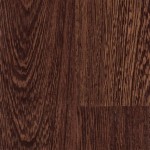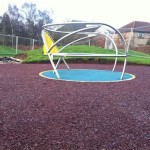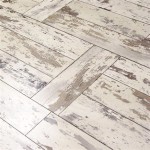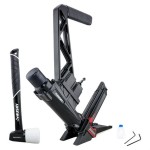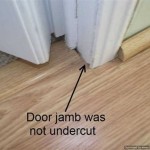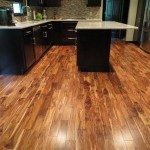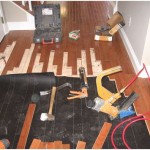Best Flooring Options for Wet Areas: A Comprehensive Guide
Selecting the appropriate flooring for wet areas, such as bathrooms, kitchens, laundry rooms, and basements, requires careful consideration. The primary concern is moisture resistance, but durability, safety, aesthetics, and cost also play significant roles in the decision-making process. Flooring that is not designed to withstand moisture can lead to a host of problems, including mold and mildew growth, structural damage, and potentially hazardous conditions.
The performance of flooring in wet environments is directly linked to its ability to repel water, resist warping or swelling, and maintain its structural integrity over time. Certain materials are inherently better suited for these challenging conditions than others. This article will explore various flooring options, highlighting their strengths and weaknesses in relation to moisture resistance, durability, safety, and overall suitability for wet areas.
Understanding the Challenges of Wet Areas
Wet areas, by their very nature, present specific flooring challenges. These challenges extend beyond simple water exposure. Fluctuations in humidity levels, the potential for standing water, and the presence of cleaning chemicals all contribute to the demands placed on flooring materials. It is essential to understand these challenges to make an informed flooring choice.
Water damage is a major concern. Constant exposure to moisture can cause wood to rot, laminate to delaminate, and certain types of tile to crack. Mold and mildew growth, accelerated by dampness, can pose health risks and create unpleasant odors. Furthermore, standing water can create slip hazards, increasing the risk of accidents.
The selection of appropriate flooring requires an understanding of the specific demands of the intended space. A bathroom, for example, is exposed to high levels of humidity and occasional splashes of water. A laundry room may experience spills of detergents and other chemicals. A basement, particularly one that is prone to flooding, requires a flooring solution that can withstand significant water exposure.
Top Flooring Choices for Wet Environments
Several flooring materials offer excellent performance in wet environments. These options vary in their composition, installation requirements, and aesthetic appeal. Understanding the characteristics of each material is crucial for making an informed decision.
Porcelain Tile: Porcelain tile is widely considered one of the best flooring options for wet areas. Its dense, non-porous composition makes it virtually impervious to water damage. This inherent water resistance prevents moisture absorption, reducing the risk of mold and mildew growth. Porcelain tile is also exceptionally durable, capable of withstanding heavy foot traffic and resisting scratches and stains.
In addition to its practical benefits, porcelain tile offers a wide range of design options. It is available in various sizes, shapes, colors, and patterns, allowing for customization to suit any aesthetic preference. Some porcelain tiles even mimic the appearance of natural stone or wood, providing the look of these materials without the associated moisture concerns.
Grout lines between tiles can be a potential source of water intrusion. However, the use of epoxy grout, which is more water-resistant than traditional cement-based grout, can further enhance the overall moisture protection of a porcelain tile floor.
Ceramic Tile: Similar to porcelain tile, ceramic tile is another excellent choice for wet areas. While not as dense as porcelain, ceramic tile is still highly water-resistant and durable. It is generally less expensive than porcelain, making it a more budget-friendly option.
Ceramic tile also offers a wide variety of design options, allowing for creative expression in any space. It is available in various colors, patterns, and sizes. Like porcelain tile, proper sealing of grout lines is essential to prevent water penetration.
Vinyl Flooring (Sheet, Tile, & Plank): Vinyl flooring is a synthetic material known for its water resistance, durability, and affordability. It is available in several forms, including sheet vinyl, vinyl tile, and vinyl plank, each with its own advantages.
Sheet vinyl offers the best water resistance due to its seamless construction. With proper installation, there are no seams for water to penetrate. Vinyl tile and plank, while not completely seamless, are still highly water-resistant and offer greater design flexibility. Luxury vinyl plank (LVP) and luxury vinyl tile (LVT) are particularly popular due to their realistic wood or stone appearances and enhanced durability.
Vinyl flooring is also relatively easy to install, making it a popular choice for DIY projects. It is comfortable underfoot and offers good sound insulation. However, it is important to choose a high-quality vinyl product to ensure long-term performance and resistance to scratches and dents.
Stone Flooring: Natural stone flooring, such as granite, slate, and travertine, can be used in wet areas, but it requires careful selection and maintenance. These materials are naturally porous and can absorb water if not properly sealed. Sealing helps to protect the stone from staining and water damage.
Granite is the most water-resistant of the natural stone options due to its dense composition. Slate is also relatively water-resistant and offers a unique, textured appearance. Travertine, with its distinctive holes and pits, requires more frequent sealing to prevent water penetration.
Stone flooring is a high-end option that adds a touch of elegance to any space. However, it can be more expensive than other flooring materials, and professional installation is often recommended.
Epoxy Flooring: Epoxy flooring is a seamless, durable, and water-resistant option that is often used in commercial and industrial settings, but it is also gaining popularity in residential applications. It is created by mixing epoxy resin with a hardener, resulting in a hard, glossy surface that is resistant to water, chemicals, and stains.
Epoxy flooring is particularly well-suited for basements and laundry rooms, where moisture exposure is a concern. It is also easy to clean and maintain. Epoxy flooring can be customized with various colors, patterns, and textures, allowing for a unique and personalized look.
The installation of epoxy flooring requires specialized equipment and expertise, making it a project best left to professionals. Proper surface preparation is essential to ensure a strong bond between the epoxy and the subfloor.
Factors to Consider When Choosing Flooring for Wet Areas
Selecting the right flooring for wet areas involves considering several factors beyond just moisture resistance. These factors include safety, durability, cost, aesthetics, and maintenance requirements.
Safety: Slip resistance is a critical safety consideration in wet areas. Certain flooring materials, such as textured tile or vinyl with a non-slip surface, offer better traction than smooth, polished surfaces. The use of area rugs or mats can also help to improve slip resistance in specific areas.
Durability: The durability of flooring is essential for long-term performance. High-traffic areas require flooring that can withstand wear and tear, resist scratches and dents, and maintain its appearance over time. Porcelain tile, stone, and high-quality vinyl are known for their durability.
Cost: The cost of flooring can vary significantly depending on the material, installation requirements, and design options. It is important to establish a budget and consider the total cost of ownership, including installation, maintenance, and potential repairs.
Aesthetics: Flooring plays a significant role in the overall aesthetic of a space. Consider the style and color scheme of the room when choosing flooring. Select a material that complements the existing décor and creates the desired atmosphere.
Maintenance: Different flooring materials require different levels of maintenance. Some materials, such as porcelain tile and vinyl, are relatively easy to clean and maintain. Others, such as natural stone, require more frequent sealing and specialized cleaning products.
Installation Considerations for Wet Area Flooring
Proper installation is crucial for ensuring the long-term performance of flooring in wet areas. Incorrect installation can compromise the water resistance of the material and lead to problems such as mold growth and structural damage.
Subfloor Preparation: A properly prepared subfloor is essential for any flooring installation. The subfloor should be level, clean, and dry. Any imperfections or cracks in the subfloor should be repaired before installing the new flooring. In wet areas, it is particularly important to ensure that the subfloor is waterproofed or protected from moisture.
Waterproofing: In areas prone to significant water exposure, such as showers and bathrooms, waterproofing is essential. This can be achieved by applying a waterproof membrane to the subfloor before installing the flooring. The membrane creates a barrier that prevents water from penetrating the subfloor and causing damage.
Sealing: Grout lines in tile and natural stone floors should be properly sealed to prevent water penetration. The type of sealant used should be appropriate for the material and the environment. It is important to re-seal grout lines periodically to maintain their water resistance.
Professional Installation: For complex flooring installations or when working with materials that require specialized skills, professional installation is recommended. Professional installers have the experience and expertise to ensure that the flooring is properly installed and sealed, minimizing the risk of water damage and other problems.
Alternative Flooring Options and Considerations
While the above-mentioned flooring materials are commonly recommended for wet areas, other options exist with varying degrees of suitability. Understanding their limitations is essential for making informed decisions.
Laminate Flooring: Laminate flooring is generally not recommended for wet areas. While some laminate products are water-resistant, they are not waterproof. Prolonged exposure to moisture can cause the laminate to swell, warp, and delaminate. If laminate flooring is used in a wet area, it is important to choose a high-quality, water-resistant product and ensure that it is properly installed and sealed.
Hardwood Flooring: Solid hardwood flooring is susceptible to water damage and is not recommended for wet areas. Water can cause the wood to warp, swell, and rot. Engineered hardwood flooring, which consists of a thin layer of hardwood veneer over a plywood core, is somewhat more resistant to moisture than solid hardwood, but it is still not ideal for areas with high levels of humidity or potential water exposure.
Carpet: Carpet is generally not recommended for wet areas due to its susceptibility to mold and mildew growth. Carpet fibers can trap moisture, creating a breeding ground for microorganisms. If carpet is used in a wet area, it is important to choose a synthetic material that is mildew-resistant and ensure that it is properly dried after any water exposure.
Choosing the right flooring for wet environments requires careful consideration of various factors. While certain materials, such as porcelain tile and vinyl, offer inherent water resistance and durability, others may require specific installation techniques and maintenance practices to ensure their long-term performance. Prioritizing safety, aesthetics, and cost will help ensure that the final flooring selection meets the specific needs and preferences of the space.

Types Of Floors For Wet Rooms The Complete Guide L Antic Colonial

Selecting The Best Flooring For Kitchens Laundries Wet Areas Mr Timber

7 Best Wet Area Flooring Options For Your Home

We Compare The Best Worst Flooring Choices For Wet Surfaces

What Is The Best Flooring For Wet Rooms Kennington

Best And Worst Flooring Choices For Wet Areas Refloor

Selecting The Best Flooring For Kitchens Laundries Wet Areas Mr Timber
Best Worst Flooring Choices For Damp And Wet Areas

Best Timber Flooring For Bathroom And Wet Areas

Types Of Floors For Wet Rooms The Complete Guide L Antic Colonial

